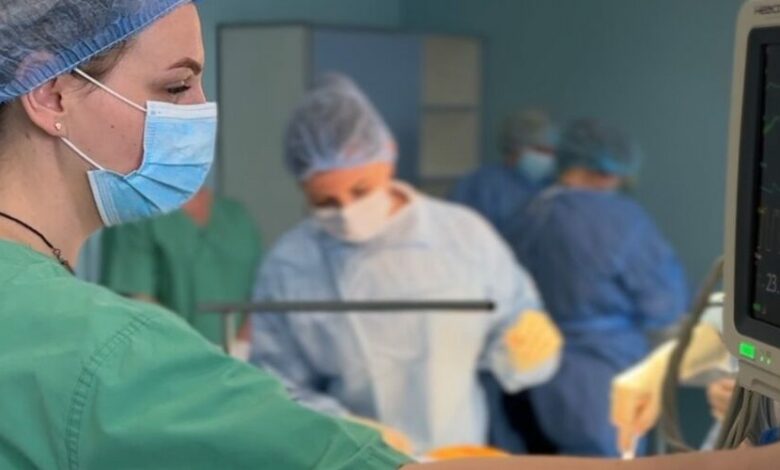
Despite 5 unsuccessful pregnancies, a 37-year-old woman did not give up and decided to try again. And, thanks to the specialists of St. Anne’s Hospital of the First Medical Association, she finally became a mother.
At the patient’s request, we will not disclose her name, because not all her relatives and friends know what she had to go through on her way to becoming a mother.
The woman first became pregnant at the age of 30, right after her wedding. But already at the 11th week she lost the baby. Her next four pregnancies also ended in loss, all in the first trimester. During these attempts, doctors discovered a number of pathologies in the patient. The first one is lupus anticoagulant – when there are antibodies in the blood that affect the clotting process and contribute to thrombosis. The second abnormality is the shape of the uterus, which is biconvex: that is, not solid, but divided by a septum. And the third problem is the genetic similarity with her husband. Their genes are like those of a brother and sister.
The patient was treated with medications: one from one and the other from the other. But the result was the same – a miscarriage. And after the fifth loss, the woman was advised to see another fertility specialist. The doctor decided to act more radically and surgically removed the septum in the uterus. The woman became pregnant for the sixth time. Her reproductive specialist advised her to register with Olena Zhemela, an obstetrician-gynaecologist at St Anne’s Hospital. Because she trusts this specialist like herself.
The first trimester went well, without complications. However, the doctor discovered another pathology that could have triggered a miscarriage at a later stage.
“The patient has isthmic-cervical insufficiency, which is a pathological condition of the cervix in which the cervix is unable to withstand intrauterine pressure and hold the growing fetus. This problem can be hereditary and cervical fibre insufficiency often leads to miscarriages. To prevent this, we suture the uterus in such cases, which is best done at 14-16 weeks of pregnancy. Together with my colleague, obstetrician-gynaecologist Yuriy Ogorodnyk, we performed a small operation to suture the uterus. And this allowed this woman to successfully carry her pregnancy until the scheduled delivery date,” says Olena Zhemela, obstetrician-gynaecologist at St Anne’s Hospital’s maternity unit.
The woman in labour and her doctor really wanted the birth to be natural. However, due to the child’s incorrect position and the strong tangling of the umbilical cord, a decision was made to perform a caesarean section. Thus, a very long-awaited, healthy and strong boy named Marko was born. And the 37-year-old patient finally became a mother.

